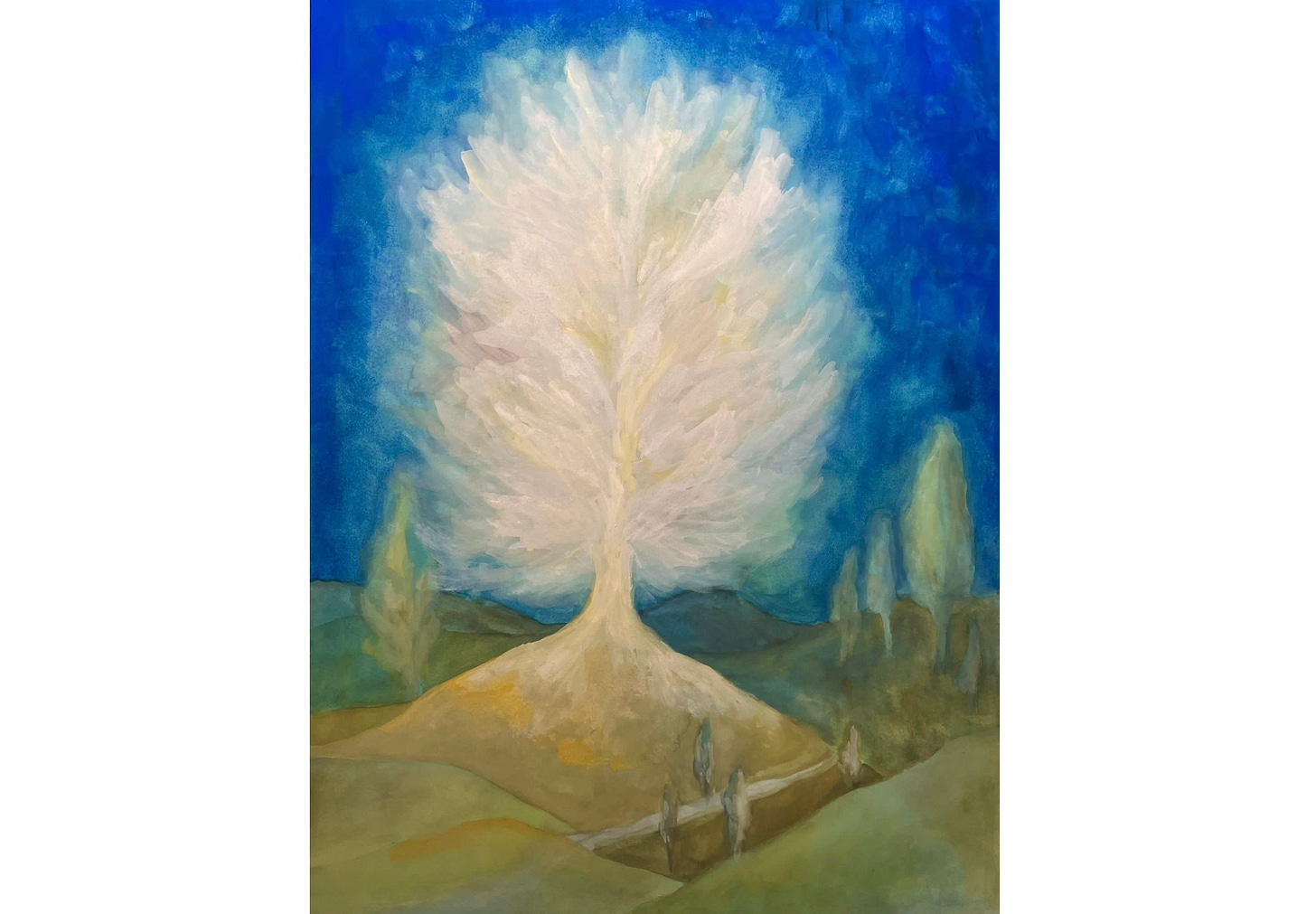The Paper Bodhisattva vaguely remembered that in its past life, it was the Tree Bodhisattva. It reincarnated as the Paper Bodhisattva to save all sentient beings in a different way. Initially, it allowed people to write and draw. Humans invented writing and painting, adding another layer to the world. Apart from the real world, there was now the world of text and art. They created an illusory existence with lines and symbols. However, this illusory existence needed to be anchored onto something substantial. People tried clay tablets, bamboo slips, papyrus, and parchment, but eventually, they all turned to the Paper Bodhisattva.
In the early days, people used pens to record data, discuss topics, and express emotions on the Paper Bodhisattva. When people invented printing, the Paper Bodhisattva became widely spread and benefited all beings. But the Paper Bodhisattva itself is not the data, the topic, or the emotion, nor is it the precise record, the in-depth discussion, or the moving expression. It is merely the boat across the river, the finger pointing to the moon. The Paper Bodhisattva felt this was completely in line with the identity of a Bodhisattva.
There were also times when people cherished the Paper Bodhisattva immensely, even deifying it. Paper that had been written on could not be discarded casually but had to be burnt in sacrificial vessels. Some paper-made books, archives, or paintings even held supreme authority. On paper, images of Buddhas, Bodhisattvas, and various deities appeared. The Paper Bodhisattva often lamented that people did not understand, the images were only images, and the paper was just paper.
However, there were also instances where people diminished the status of the Paper Bodhisattva. It was considered fragile, insubstantial, nondurable, and even impractical. Hence, people spoke of a "paper tiger" or a "house of cards", mocking others for “strategizing on paper” or for "empty written promises". Why is paper considered an inferior substitute or imitation of real things? Indeed, statues of Bodhisattvas are made of gold, silver, copper, stone, and wood, but never paper. But the Paper Bodhisattva didn't mind, as it has always kept a low-profile.
The subsequent evolution of the Paper Bodhisattva was also unexpected. In addition to being a medium for writing and painting, it also distributed benefits to all beings in the form of everyday items. It became paper cups and paper plates, making eating and drinking more convenient. It turned into tissues that wipe away dirt, and even toilet paper and diapers, bearing the filthiest substances for people. The Paper Bodhisattva has fully embodied the Paramita of Endurance and made more diligent progress on the path of spiritual practice.
However, the widespread distribution by the Paper Bodhisattva also led to environmental issues. Disposable paper products cause resource waste, leading to excessive deforestation, which in turn exacerbates the greenhouse effect. This troubled the Paper Bodhisattva greatly. But after all, a Bodhisattva is a Bodhisattva, wouldn't it understand the principle of reincarnation? Thus, the Paper Bodhisattva performed the miracle of recycling and resurrection. However, the reborn Paper Bodhisattva is coarser, and it cannot reincarnate infinitely. But it is always better than not reincarnating at all.
Although the Paper Bodhisattva is just a medium, it still feels joyous to see objects of appreciation emerging from itself. For example, the Paper Bodhisattva loves being close to the Writer. Seeing the Writer's inspiration slowly taking shape on the pages of a notebook, then drafting and revising it on manuscript paper, and finally being printed into a book, it feels like it has turned into fertile soil, allowing people to cultivate, sow, and reap on it. The Paper Bodhisattva also loves being close to the Painter. Watching the Painter sketch on its surface and smear watercolors on it, the Paper Bodhisattva experiences a pleasure similar to a physical sensation. When the Painter and the Writer collaborate to publish collections of pictures and texts, the Paper Bodhisattva's experience approaches fulfillment.
Unexpectedly, the Writer later stopped using pen and paper, and even stopped printing his works into paper books. He spent his days typing on a computer and then publishing on the internet. Even the Painter stopped coloring on paper. She drew directly on screens and even used artificial intelligence programs to generate images by issuing commands. It was said that the Writer and the Painter would collaborate to mint their texts and images into NFTs, a type of virtual digital data stored on the blockchain. The Paper Bodhisattva could not understand what that was at all. How could there be books and paintings without paper? For the first time since its birth, the Paper Bodhisattva felt heartbroken and shed tears.
Paper Bodhisattva, don't shed tears! The tears will wet your body and ruin your face! Look at this! The Writer has written a story about the Paper Bodhisattva, and the Painter has created a drawing about the Paper Bodhisattva. Although it does not need paper to carry it, this work arises because of the Paper Bodhisattva, and is created for the Paper Bodhisattva. The Paper Bodhisattva has entered the digital virtual world, achieving the true union of form and emptiness. In this world, there is no longer any wearing or consumption. The Paper Bodhisattva dreams of itself transforming back into a tree, standing on a hill, bathing in the breeze and the warm sunshine, swaying gently, shimmering brightly.




